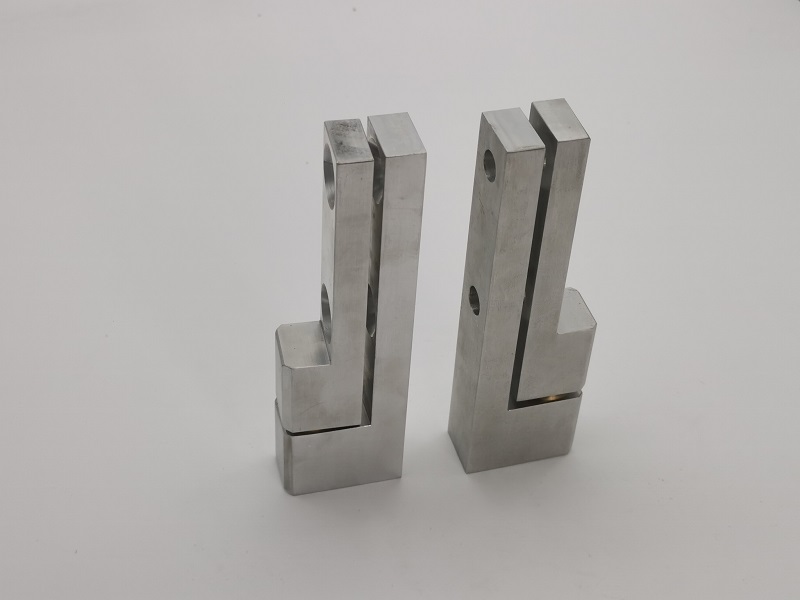What Makes CNC Machining the Gold Standard in Precision Manufacturing?
2025-08-08
In the intricate world of manufacturing, where precision, repeatability, and adaptability define success, CNC machining has emerged as an irreplaceable technology. From aerospace components that demand micron-level accuracy to custom parts for medical devices, CNC machining delivers consistent results that traditional manufacturing methods struggle to match. As industries evolve and product designs become more complex, understanding why CNC machining has become the benchmark for precision manufacturing is essential for businesses aiming to stay competitive. This guide explores the transformative role of CNC machining, its core technologies, detailed specifications of our advanced machining solutions, and answers to common questions to highlight its impact on modern production.
Trending News Headlines: Top Searches on CNC Machining
- "How CNC Machining Reduces Lead Times in Aerospace Manufacturing"
- "CNC Machining for Medical Devices: Meeting Strict Regulatory Standards"
These headlines underscore CNC machining’s versatility—from its role in accelerating production timelines to its ability to meet the stringent requirements of highly regulated industries. As manufacturers embrace Industry 4.0, CNC machining continues to evolve, solidifying its position as a cornerstone of modern manufacturing.
Why CNC Machining Dominates Precision Manufacturing
Unrivaled Precision and Consistency
CNC machining achieves tolerances as tight as ±0.0001 inches, making it indispensable for industries where even the smallest deviation can compromise functionality or safety. Unlike manual machining, which relies on operator skill and is prone to human error, CNC systems execute pre-programmed designs with exacting consistency. This means that every part produced—whether the first or the 10,000th—adheres to the same specifications. For example, in the aerospace industry, where components like turbine blades must withstand extreme temperatures and pressure, this level of precision ensures reliability and performance. Similarly, medical device manufacturers depend on CNC machining to produce surgical instruments and implants with consistent dimensions, directly impacting patient safety.
Versatility Across Materials and Designs
CNC machining handles a vast range of materials, including metals (aluminum, steel, titanium, brass), plastics (ABS, PEEK, nylon), composites, and even exotic materials like Inconel. This versatility allows manufacturers to produce parts for diverse applications, from lightweight aluminum components for drones to high-strength titanium parts for aircraft. Additionally, CNC machines excel at producing complex geometries—including 3D contours, undercuts, and intricate internal features—that are difficult or impossible to achieve with manual methods. Advanced CNC systems, such as 5-axis machines, can rotate parts along multiple axes simultaneously, enabling the production of highly complex parts in a single setup, reducing both time and errors.
Efficiency and Scalability
CNC machining streamlines production workflows, reducing lead times and increasing throughput. Once a program is developed, it can be reused indefinitely, eliminating the need for repeated setup adjustments. This efficiency makes CNC machining suitable for both low-volume, custom production (e.g., prototyping) and high-volume manufacturing (e.g., automotive parts). Automated loading and unloading systems, combined with lights-out manufacturing capabilities, allow CNC machines to operate 24/7, maximizing productivity and minimizing downtime. For businesses, this translates to faster time-to-market, lower labor costs, and the ability to scale production quickly in response to demand fluctuations.
Cost-Effectiveness for Complex Parts
While the initial investment in CNC equipment and programming can be significant, the technology delivers long-term cost savings—especially for complex parts. CNC machining reduces material waste by optimizing tool paths and minimizing excess material removal. It also eliminates the need for expensive jigs and fixtures required by manual machining, particularly for intricate designs. For low-volume runs, CNC machining avoids the high tooling costs associated with processes like injection molding, making it an economical choice for prototypes or custom parts. For high-volume production, the automation of CNC systems reduces labor expenses and minimizes rework due to errors, further lowering per-unit costs.
Integration with Advanced Technologies
CNC machining is at the forefront of Industry 4.0, integrating with technologies like artificial intelligence (AI), machine learning (ML), and the Internet of Things (IoT) to enhance performance. AI-powered CNC systems can predict tool wear, adjust cutting parameters in real time to optimize efficiency, and even self-correct for minor deviations. IoT-enabled machines collect and analyze data on performance, enabling predictive maintenance that prevents unexpected breakdowns. Additionally, CNC machining seamlessly integrates with computer-aided design (CAD) and computer-aided manufacturing (CAM) software, allowing for rapid design iterations and seamless transition from digital models to physical parts. This integration accelerates the product development cycle and ensures that designs are manufacturing-ready from the start.
Core Technologies in CNC Machining
3-Axis CNC Machining
3-axis CNC machines move along three linear axes (X, Y, Z), making them ideal for producing simple to moderately complex parts with flat surfaces or straightforward contours. They are widely used in industries like automotive and consumer goods for manufacturing parts such as brackets, panels, and simple mechanical components. 3-axis machines are cost-effective, easy to program, and suitable for high-volume production of less complex parts.
4-Axis and 5-Axis CNC Machining
4-axis machines add a rotational axis (A-axis) to the 3 linear axes, allowing parts to be rotated while cutting. This enables the production of parts with features on multiple sides, such as gears or cams, without repositioning the workpiece. 5-axis machines take this further by adding a second rotational axis (B-axis), allowing the cutting tool to approach the part from any angle. This versatility makes 5-axis machining ideal for highly complex parts, such as aerospace components, mold inserts, and medical implants, reducing setup time and improving accuracy.
CNC Milling and Turning
CNC milling uses rotating cutting tools to remove material from a stationary workpiece, creating flat or curved surfaces, slots, and holes. It is suitable for producing a wide range of parts, from simple blocks to complex 3D shapes. CNC turning, by contrast, rotates the workpiece against a stationary cutting tool, making it ideal for cylindrical parts like shafts, bolts, and tubes. Some machines combine milling and turning capabilities (multi-tasking machines), enabling the production of complex parts in a single setup, reducing handling time and improving precision.
Swiss-Type CNC Machining
Swiss-type CNC machines are specialized for producing small, precise parts (often less than 1 inch in diameter) with high accuracy. They hold the workpiece with a guide bushing close to the cutting tool, minimizing vibration and allowing for extremely tight tolerances. Swiss-type machining is widely used in the medical and watchmaking industries for producing tiny components like surgical screws, connectors, and precision gears.
Our CNC Machining Specifications
|
Feature
|
3-Axis CNC Milling
|
5-Axis CNC Machining
|
CNC Turning
|
Swiss-Type Machining
|
|
Axis Configuration
|
X, Y, Z axes
|
X, Y, Z, A, B axes
|
X, Z axes (with C-axis for live tooling)
|
X, Z axes (with guide bushing)
|
|
Workpiece Size Range
|
Up to 39 x 20 x 20 inches (1000 x 500 x 500 mm)
|
Up to 24 x 20 x 20 inches (600 x 500 x 500 mm)
|
Diameter: Up to 20 inches (500 mm); Length: Up to 60 inches (1500 mm)
|
Diameter: 0.01–1.25 inches (0.25–32 mm); Length: Up to 12 inches (300 mm)
|
|
Spindle Speed
|
8,000–15,000 RPM
|
10,000–20,000 RPM
|
2,000–6,000 RPM
|
8,000–15,000 RPM
|
|
Tolerance
|
±0.0005 inches (±0.0127 mm)
|
±0.0001 inches (±0.0025 mm)
|
±0.0005 inches (±0.0127 mm)
|
±0.0001 inches (±0.0025 mm)
|
|
Materials Processed
|
Aluminum, steel, brass, plastics, composites
|
Titanium, Inconel, stainless steel, aluminum, high-strength alloys
|
Steel, aluminum, copper, plastics, exotic metals
|
Titanium, stainless steel, brass, medical-grade plastics
|
|
Maximum Feed Rate
|
500 inches per minute (12,700 mm/min)
|
600 inches per minute (15,240 mm/min)
|
400 inches per minute (10,160 mm/min)
|
300 inches per minute (7,620 mm/min)
|
|
Tool Capacity
|
20–40 tools
|
30–60 tools
|
12–24 tools (with live tooling)
|
16–32 tools
|
|
Surface Finish
|
Up to 16 Ra (microinches)
|
Up to 8 Ra (microinches)
|
Up to 16 Ra (microinches)
|
Up to 8 Ra (microinches)
|
|
Industries Served
|
Automotive, consumer goods, industrial equipment
|
Aerospace, defense, mold making
|
Oil and gas, automotive, construction
|
Medical devices, electronics, precision instruments
|
|
Lead Time
|
1–3 days (prototyping); 5–10 days (production)
|
3–5 days (prototyping); 7–14 days (production)
|
1–2 days (prototyping); 3–7 days (production)
|
2–4 days (prototyping); 5–10 days (production)
|
All our CNC machining processes adhere to international quality standards, including ISO 9001, AS9100 (aerospace), and ISO 13485 (medical devices), ensuring compliance with industry-specific requirements. We also offer value-added services such as surface treatment (anodizing, plating), assembly, and inspection (using CMM and laser scanning) to provide end-to-end solutions for our clients.



